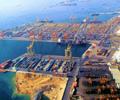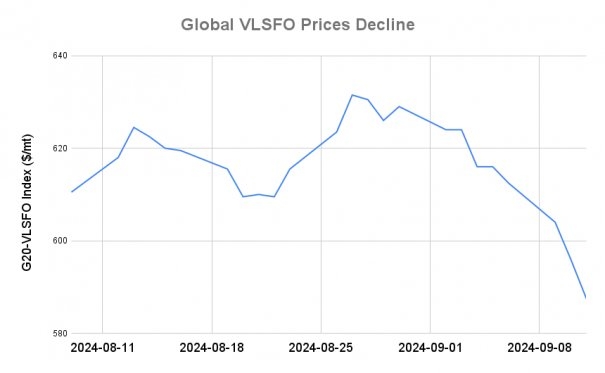Greek Shipping Fleet: The Years Ahead

Greek shipping took a breather in 2022 but resumed its growth even though at a modest pace. In 2023 there was a growth in the Greek fleet by 85 vessels and 2% in DWT terms.
Although China continued to demonstrate robust yoy growth, the Greek shipping fleet at 393m DWT still held a comfortable lead against China’s 302m DWT, with Japan in third place at 238m DWT (UNCTAD). Interestingly, in terms of second hand vessels, Greeks were net sellers in 2022, 2023 and the first half of 2024, reflecting high vessel prices. As scrapping fell substantially during the above period, the fleet grew via newbuilding deliveries in 2023.
The Greeks largely overcame their reluctance over conventional eco Tier III orders in the expectation that the 2023 emission regulations may be relaxed or postponed. In addition, with dual fuel technology and new fuels posing challenges of its own, Greeks saw an opportunity in ordering Tier III eco vessels set to enjoy a comparative advantage to older conventional technology vessels as well as a good useful trading life span. Hence, in the first half of 2024, the total DWT of Greek newbuilding orders rose from 24.33m DWT to 43.01m DWT with continuous further ordering in the recent months.
As all shipping markets are showing relative strength and older vessels are enjoying incomes above breakeven, Greek owners largely kept their older vessels for the time being and thus the fleet grew older. Given the rapid rise of dual fuel and eco Tier III orders, it is anticipated that in the absence of shipping and / or financial shocks, the Greek fleet is expected to continue its growth. However, as the bulk of the Greek fleet ages, the rising newbuildings are not expected to reverse the age profile of the Greek fleet.
Economies of scale are still a decisive factor in shipping and it is not surprising that the number of Greek shipping companies has reduced yet again in the 2023 to 592, a short breath away from the all time low of 588 in 2018. As expected, most of the fall is attributed to the smallest 1-2 vessels fleets, as all other fleet sizes showed resiliency.
A factor offsetting the above consolidation is the tendency by many large shipping companies to create ‘separate’ offshoot companies and either float them in the public markets or accommodate family requirements. These new companies often grow rapidly and are in transit via the low fleet sizes. It is expected that further consolidation in the number of Greek shipping companies will continue at a steady pace. However, the average size of a Greek shipping company is expected to grow both in numbers of and DWT. As already covered in our Petrofin Bank Research, the loan margins and overall terms enjoyed by large Greek owners have become even more pronounced. In particular, loan margins have fallen towards 1.5% over SOFR supported by such companies’ strong liquidity and low LTVs.
It is noteworthy that the 16-24 vessel fleet category showed the largest growth in 2023 of 10.85%, which supports the economies of scale hypothesis. It is expected that the above trends will continue in the years ahead, thus rendering Greek shipping more competitive and stronger.
In contrast to the steady growth and development of the Greek fleet over time, we must mention the increasingly complex and escalating geopolitical issues affecting both international trade as well as overall demand. Adverse geopolitical issues may be beneficial to shipping at times. However, relying on their effects in ton miles increases is not a longer term sustainable factor. Rising transportation costs do affect consumer prices and demand over time. In addition the ‘produce it at home’ policies by the US and other nations are a risk to international trade and hence shipping and as such policies result in higher prices and there is an increased risk of a slowdown in global growth. Geopolitical risks have largely taken over from emission related regulatory risk for the time being. However, should shipping face penalties across the world as in the EU, this, too, would affect demand for shipping and transportation costs.
The world is increasingly fixated on sanctions, tariffs, penalties, trade wars and other cost increasing measures, which adversely impact international trade. Although the supply side in shipping across most sectors remains market supportive for the next couple of years, forecasting future shipping markets has become very complex and uncertain.
Recently, the danger of a slowdown in the US and China has grown, although no doubt both economies are still showing good growth and China remains committed to fiscal stimulus. However, given the above increase of risks of a slowdown, a fall in interest rates would assist global growth and the cost of serivicing loan debt in shipping. The upcoming US elections cause insecurity for shipping with further potential imposition of tariffs, thus impacting greatly long haul US trade.
Despite the darkening clouds, Greek owners seem to be cautiously optimistic as to future market conditions advocating that shipping has overcome many obstancles in the past and has adapted well. Greek owners need to take decisions over their newbuilding programs and decide on new fuels including biofuels, LNG, dual fuels and pollution saving devices, in an effort to remain competitive and reap the benefits of such vessels. Many have thus far selected to invest in eco Tier III vessels, as they bring a well known eco technology and represent the best immediate and lower cost option for newbuildings.
Overall, Greek shipping remains cautiously optimistic and committed to both growth, as well as newer fuel technologies. As newbuilding slots for eco Tier III newbuildings now stretch to 2027 and beyond, it is also expected that the emphasis on newer fuel technologies will increase in line with a hopefully clearer regulatory picture.
Source: Petrofin Research




